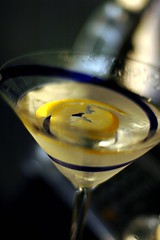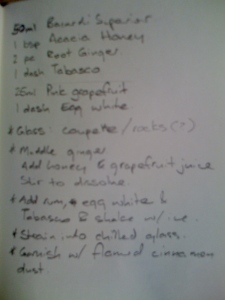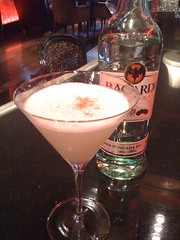On the Martini

I've spent a decent amount of time thinking about gin recently. There are worse things to think about and I've sat in on two training sessions on it over the past fortnight. One thing that always comes up in any gin training is the Martini. It's one of the most iconic cocktails - everybody knows of the Martini, even if not everybody knows what it exactly is. It strikes me that the modern Martini drinker falls into one of two schools:
a) an experienced, hardcore drinker who knows exactly how they want their drink, or b) someone who's just seen a Bond movie and really doesn't know what they're getting into. I have fond memories of the aftermath of Casino Royale's release - making Vespers and, five minutes later, being asked to top them up with lemonade.
All of it boils down to this: the Martini - or, rather, the modern dry Martini - is an incredibly inaccessible drink. If you don't like the taste of straight spirits, there's no point of entry unless you turn to neo-martinis which are an entirely different beast.
It's a shame, really. I used to make a Cosmopolitan-flavoured martini-style cocktail as a party trick. At work, we've prototyped something that looks like a proper, old-school martini, and tastes like Neopolitan ice-cream. In both cases, I've found that people are really surprised in the sheer amount of flavour that you can get from a clear, colourless drink. Taking that idea further, I tried to come up with a more accessible Martini.

The other thing that sticks out at me is how unfashionable vermouth is in the mass-market these days, despite George Clooney's best efforts. If you want to blame someone, Winston Churchill's probably your best bet. Depending on who you ask, he took his Martinis with either a glance at the bottle while stirring or a pass of the bottle over the chilled glass. The drying of the Martini probably reached its logical conclusion with Salvatore Calabrese's Naked Martini, where the vermouth is sprayed into a chilled glass before adding gins straight from the freezer, creating possibly the most hardcore cocktail the world has ever known.
So, yeah. Let's make a more accessible Martini, but without using vermouth.
I do try to make things easy for myself.
The Duke of Marlborough
50ml Tanqueray Gin
25ml Sauvignon Blanc (I used Anapai River 2007 from Marlborough, New Zealand)
1 barspoon Acacia Honey
1 dash Fee Brothers Peach BittersDissolve honey into white wine in a mixing glass. Add the gin and bitters, and stir with ice. Fine-strain into a chilled martini glass. Garnish with a mint leaf wrapped in a lemon zest twist.
(Picture credits: Martini Time, from wickenden's Photostream on Flickr; news.bbc.co.uk)


